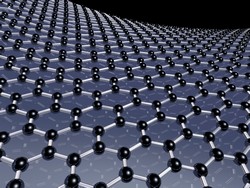Graphene makes the leap to consumer products
Graphene properties have opened up new avenues of research in a variety of fields from high-energy particle physics to optoelectronics and energy. The main barrier to transferring the wealth of innovation from lab bench to market arises from the lack of suitable large-scale production techniques. The EU-funded project GRAFOL(opens in new window) (Graphene chemical vapour deposition: Roll to roll technology) was initiated to address this issue by combining a common mass manufacturing technique with an effective technique of growing graphene, and by using advanced spectroscopy to evaluate graphene growth. GRAFOL's key result was the development of a roll-to-roll (R2R) production tool capable of making large sheets of graphene on an industrial scale. Operating at atmospheric pressure and reduced operating temperature, it was identified as the best route to low-cost manufacturing of this single-layer carbon material. In addition to the development of an R2R tool, the project team adapted the chemical vapour deposition (CVD) method to grow low-cost batches of single or layered graphene onto 300 mm-diameter silicon wafers – the standard size currently used in the semiconductor industry. This development enabled the team to integrate graphene-based photomodulators and photodetectors in a silicon photonics platform. Partners also produced a spintronics platform, a graphene-based field effect transistor and a working organic light-emitting diode using few-layer graphene as an alternative to costly indium tin oxide. In addition, a radio frequency nanoelectromechanical system and graphene-based sensors were produced. Finally, carbon nanotube (CNT) forest growth on graphene and high-density vertical CNT growth with excellent contacts could form the basis of next-generation all-carbon 3D interconnect technology. GRAFOL established CVD graphene growth via R2R processing as a viable large-scale manufacturing technique, opening the door to commercialisation of a wealth of novel products. As the first to demonstrate the feasibility of such production technology, the EU stands to reap important economic benefits from its world leadership position.







